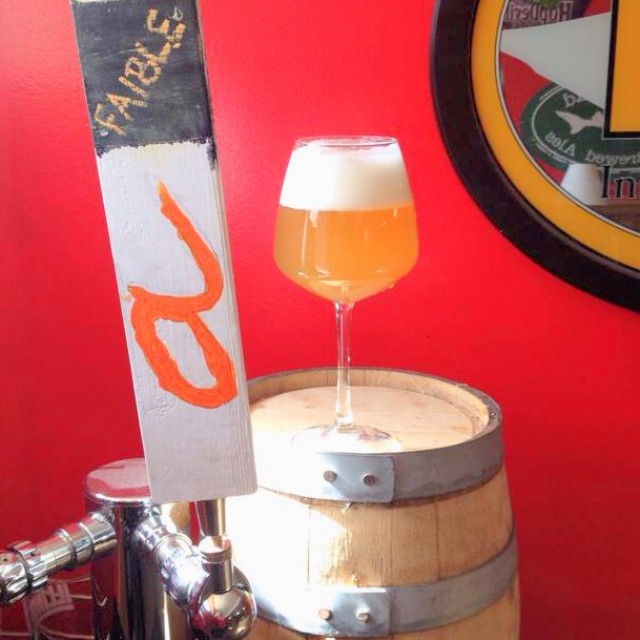For awhile now, I've wanted to brew a beer inspired by Jolly Pumpkin's Sobrehumano Palena'ole, a dark saison with cherries and passion fruit. I finally got around to it a few weeks ago, brewing a reddish saison and then adding cherries and passion fruit puree to the secondary for half the batch, and of course also adding the dregs of my last bottle of the Sobrehumano Palena'ole. For the other portion, after primary I transferred to a keg with a blend of oak cubes soaked in Pinot Noir and bourbon.
Here are the full details on the new batch:
Batch Number: 84
Brew Date: April 12, 2014.
Bottle Date:
Batch Size: 10 Gallon
OG: 1.049
FG: 1.002 (est.)
Fermentation Temperature: 70* F
IBU: 30.6
ABV: 6.2%
SRM: 15.8 (prior to fruit additions)
Mash: Single infusion for 60 minutes at 150* F
Boil: 60 minute
Fermentables
12.0 lb 2-Row Pale Ale Malt
4.0 lb Munich Malt
1.0 lb Aromatic Malt
12.0 oz CaraMunich Malt (56L)
8.0 oz Carafa II
Salts & Water
5.0g Sodium Chloride (all into the kettle)
3.0g Calcium Chloride (all into the kettle)
1.0g Gypsum (all into the kettle)
Resulting water profile is as follows:
Mash pH (est.): 5.41
Calcium: 54
Magnesium: 12
Sodium: 44
Chloride: 99
Sulfate: 38
5mL lactic acid added to the sparge water to get it to a pH around 5.5.
Hops
5mL HopShot at 60 minutes
2.0 oz. Columbus (17.5 AAU) at flameout
Other
2.0 tsp. Wyeast Yeast Nutrient at 10 minutes
Yeast
White Labs 670 American Farmhouse Blend
Jolly Pumpkin Sobrehumano Palena'ole Dregs
Notes
04.12.2014: Brewday went off without a hitch. Fermentation split between a carboy and a bucket, each with about 5 gallons. Each got 30 seconds of aeration and I pitched a few hours after chilling at room temperature.
Original WLP670 vial had an expiration of 01.09.2014. On 02.18.14, I gave it 750mL of 1.020 wort. From there, stepped up on 02.23.2014 with 2L of 1.040 wort. Finally, on 04.11.2014 (about 24 hours before pitching), decanted and then pitched cake with another 2L of 1.040 wort and put on a stir plate for 24 hours to get the approximate count require per yeastcalculator.com.
04.13.2014: No activity after about 12 hours, but removed Batch 083 from the heated water bath and put these both in at 70*F.
04.25.2014: Added 28oz. of passion fruit puree and 36oz. of frozen cherries plus the dregs of a bottle of Jolly Pumpkin Sobrehumano Palena'ole to the bucket, and sealed the lid. A pellicle had formed in the bucket, but not in the carboy. The lid had previously not been sealed.
04.30.2014: The carboy portion was transferred to a keg with 21g of oak cubes that had been soaking in Pinot Noir since 03.03.2013 plus 8g of oak cubes that had been soaking in Knob Creek bourbon since 02.16.2013. Yield is about 4.5 gallons.






